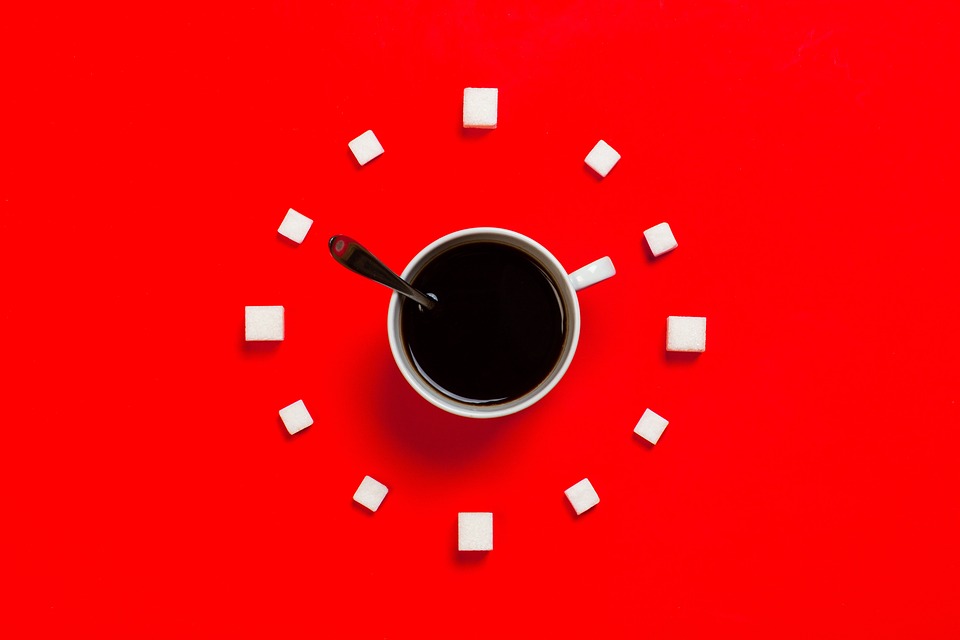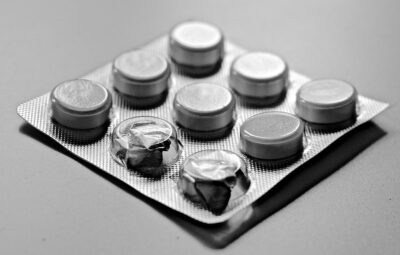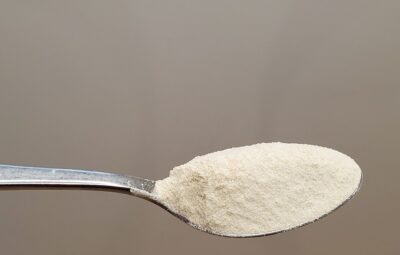Abstaining from food has a long tradition in the human experience since the dawn of our recorded history.
Nearly all societies and religions globally practice fasting in different forms, and the majority of areas have natural patterns that result in cycles of abundance and lack.
No matter the cause–whether due to a shift in seasons, a lack of rain, a bug infestation, or a military conflict–our forebears frequently experienced hunger throughout history.
Our bodies have developed processes to take advantage of scenarios where food is in limited supply.
The advantages of not having continual and convenient access to food are more diverse than one may expect. Fasting can lead to impressive weight loss results as well as provide significant protection against cancer and many other ailments. It can really have a remarkable impact on our well-being.
Nowadays, due to our worldwide food availability and comfortable lifestyles, we must voluntarily create a shortage of food in order to get therapeutic benefits.
What Is Fasting?
Refraining from eating for an intended amount of time with planned intention is what fasting entails.
Simply put, you just don’t eat for a while.
Various forms of fasting can help you reach specific objectives, and we will discuss those options further in this article. However, the evidence on fasting indicates that any type of fasting will be beneficial, so regardless of your starting point, you can anticipate gaining advantages.
Of course, most people have one big concern when it comes to fasting:
Won’t I be starving?!
In today’s world, the lack of food is not something we regularly experience. Having a regular supply of food, it is important to learn to understand your hunger cues so you can start fasting correctly.
For the majority of us, the experience of being hungry triggers an alarm system in our minds. Something feels wrong! Since it’s uncomfortable and strange, we hurry to mend it.
We usually eat all the time, so we never really know what it feels like to truly be hungry.
We tend to engage in mindless eating when we are in between meals, finding ourselves unconsciously heading to the kitchen to grab a snack.
It is essential to pay attention to when you eat and what you eat in order to send the proper signals to your brain that you are hungry. If you modify the when and what you eat, then you can anticipate feeling hunger renewed.
This is a very good sign.
When you create a situation where you are intentionally fasting, the feeling of hunger will often come in like a wave that you have to endure until it passes. You could detect the pangs of hunger, gradually becoming more and more intense, creating warnings in your mind. It may seem like it will stay forever, but after a short while, it passes. And it will get better over time.
I am of the conviction that intermittent fasting should be part of your lifestyle because it is very easy to do.
It’s gratis, it’s accessible – you can do it while you’re on the move or when your agenda is fully stocked, it’s adjustable – and you can take a break from it without losing the progress you achieved.
Fasting also helps you create balance.
Eating and abstaining from food is a natural part of life, and abstaining from food means that you can fully experience holidays, trips, and other meaningful occasions.
This is a device that grants you more power to participate without compromising your well-being.
Fasting is a swift means I am aware of to overcome excessive insulin production (often referred to as insulin resistance), blast through weight-loss standstills, eliminate persistent fat, lessen cholesterol and blood pressure, and stop the development of Alzheimer’s disease and other persistent diseases.
This helps you to live longer, boosts your lifespan, and reduces inflammation. The results of your blood test will demonstrate a decrease in markers related to diabetes, metabolic syndrome, and cardiovascular health.
There are diverse sorts of fasting that you can adapt in your way of life to make it supportable.
What Happens In Your Body During A Fast
This is one of my favorite topics. When you are fasting, there is a significant amount occurring in your body, but to understand this, we must initially review what transpires after you eat.
When you consume food, it generally furnishes a larger amount of energy than your body is able to utilize right away. Therefore, part of that energy must be stockpiled.
Insulin, a hormone that governs energy expenditure and storage, is comparable to a key that allows access to the cells where energy can be either used or kept for future use.
Insulin assists the body in preserving surplus energy, more than what can ideally be saved within the cells.
There are two main ways to store excess energy.
Turning energy into glycogen, which is a bunch of glucose molecules grouped together and held in the liver and muscles, is the first step. There is only so much glycogen that can be stored in the body. Hence if more energy is present after the glycogen stores are full, the body will convert it into triglycerides and save it in adipose (fat) tissue located throughout the body.
Regrettably, there is no upper bound on how much fat our body can hold.
It is often mistaken that the extra fat stored in the body does not originate only from the fat found in food.
It’s actually coming from carbohydrates and protein too. In the intestines, carbohydrates, and protein are converted to glucose, while fat digestion takes place by another process through the lymphatic system. When discussing maintaining energy in the body, it is acquired from the three macronutrients that we consume, including proteins, carbohydrates, and fats.
The objective of fasting that a lot of people pursue is to shed fat. To accomplish that, it would be beneficial to deplete the glucose in your cells and begin breaking down some of the stored fat. When not eating, your body moves from using glucose (found in the circulation and stored in the cells and liver) as fuel to using fat as a source of energy.
How Long Does it Take to Enter into a Fasted State After Eating
At what point will your body change from a fed state to a fasting state? How long does it take to start fasting? This article will inform you of the exact amount of time it takes to become in a fasted state after eating.
Fed VS Fasted
Your body’s metabolic rate regularly alternates between periods of having been fed and times when it is in a state of fasting. It is as if the same coin is being flipped back and forth all day, depending on the actions that are taking place.
- If you’ve consumed some calories, then your body is going to switch over into a fed state, which means you’re going to start burning that fuel you consumed. This refers to anabolism or the building of new tissue.
- If you haven’t been eating anything for a certain period of time, you’ll eventually go from a fed state into a fasted one. After you’ve depleted your body’s exogenous sources of calories coming from consumed food, you’ll start using the endogenous supply of body fat, internally stored minerals, and liver glycogen. This refers to catabolism or breaking down of old tissue.
Consuming food and not eating food are two distinct states – you can either be in a state where you have eaten or a state where you haven’t eaten – and even minor amounts of calories can turn your metabolic process into a state where you have eaten.
Although it may not appear as straightforward, it is possible to have an insufficient calorie intake yet still be in a catabolic state because your body is not getting the nutrients it requires. Conversely, you can do a fast without going into excessive catabolism due to the natural protective adjustments your body makes.
Am I Fed or Fasted?
There are various hormone-related differences between the states of having eaten and not having eaten.
- In a fed state, your blood sugar and insulin tend to be slightly higher than if you were to fast. Even if you were to be eating low glycemic foods, your body detects the presence of nutrients in the bloodstream, which are going to elevate metabolic pathways of cellular growth and repair, such as mTOR.
- If you’ve eaten something that doesn’t raise insulin or mTOR, like pure fat, you’ll stay in a semi-fasted state with low blood glucose but adequate energy. This maintains the metabolic state of nutritional ketosis, in which your body is still burning fat and ketones as a primary source of fuel, thus preserving glycogen.
- To be in a truly fasted state, you’d have to maintain cellular autophagy, which is the process by which your cells recycle old, worn-out material and debris. Autophagy is inhibited by mTOR, insulin, and amino acids. Autophagy is elevated by AMPK, ketosis, and fasting. Although small amounts of fat don’t raise mTOR, it may still slow down autophagy because the body detects the presence of nutrients in the bloodstream. Thus, it finds it unnecessary to be conducting cellular maintenance.
The traits associated with eating and abstaining from food can sometimes be similar. It is possible to remain in a state of ketosis while consuming food, and it is possible to block autophagy while abstaining from eating.
Defining Starting a Fast
Whether or not you are in a starved or an unfed state depends on how you interpret being unfed and what hormone outcome you aim to achieve. How long does it take to become fasted after eating, and what does it mean to be in a state of fasting?
If we consider a state of fasting to be characterized by reduced insulin and mTOR levels, then it is possible that a highly restrictive ketogenic diet could maintain a body state of partial fasting, featuring elevated ketones and AMPK. Nevertheless, from the standpoint of fasting-induced autophagy, fasting would not be beneficial since being provided with energy, even in the form of fat, would impede the process, which causes the metabolism to become active again.
The speed of the fasting process after eating a certain food is determined by how quickly it is broken down into nutrients, digested, and transported through the body’s bloodstream.
How Long Does it Take to Enter into a Fasted State After Eating
Eating too often may also stop you from attaining a fasted state following not eating for a day, as to enter this condition would require your body to use up its fat stores and initiate autophagy.
The time required for autophagy to be initiated is contingent upon the amount of glucose in the body, what type of food was last eaten, how long it took for it to be digested, and how long it took for the nutrients to be cleared from the bloodstream.
- As soon as you consume something with calories, you’re entering into a fed state, and your body’s going to be breaking down that food for the next few hours.
- After a few hours of digestion, your body goes into the post-absorptive stage, wherein the nutrients of the last meal are still circulating in the bloodstream. This can last up to 8-12 hours, and that’s when you’ll truly enter into a fasted state.
In reality, you only start your fast after those 8-12 hours of not eating because that’s when you’ll switch over to a fasted metabolism.
If you analyze the typical diet of the majority of people, it is clear that they rarely enjoy the advantages of abstaining from food. Maintaining a consistent eating pattern of breakfast, lunch, and dinner keeps them continually supplied due to taking in calories. Fasting for 12 hours or more during the night does not lead to noteworthy changes in the metabolism.
How Fast Do You Enter a Fasted State
The amount of food consumed also varied. As stated before, eating a big meal that has a high level of insulin production may cause you to go into a fasting condition quicker than if you eat several smaller, more frequent meals because you will be spending more of the day in a fasted state.
You can stop yourself from becoming completely starved by having a substantial breakfast and dinner while leaving 8-10 hours between meals and a 12-hour overnight fast. You will go for a period of time between meals without eating a full meal, but not completely fasting.
It’s okay for you to accomplish nutritional ketosis via fasting and stay healthy, reduce your body fat, and eat less frequently if that is what you wish to do. In order to obtain the advantages of autophagy, one would need to fast for significantly longer than usual.
The full benefits of autophagy are seen after two to three days of abstaining from eating. Before that point, your body will likely use mostly stored fat for energy. After this period, your healthy cells will start to convert old and damaged cells into fuel. It does not come about quickly because ketones conserve protein, and your system can effectively endure without any protein or amino acids for a few days. In a period of two to three days, the body will start to absorb the decaying cells and switch the protein from them into new protein that the balanced cells can use.







